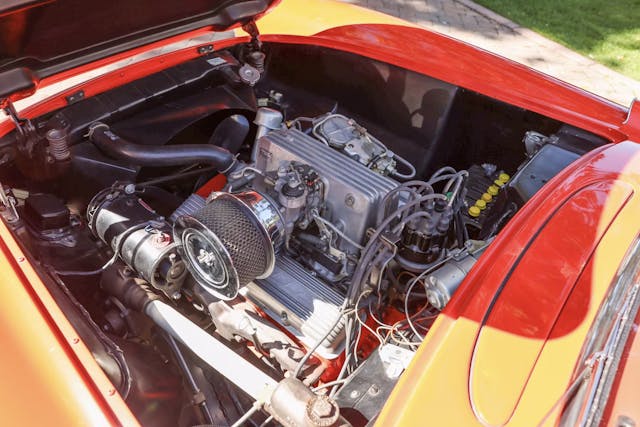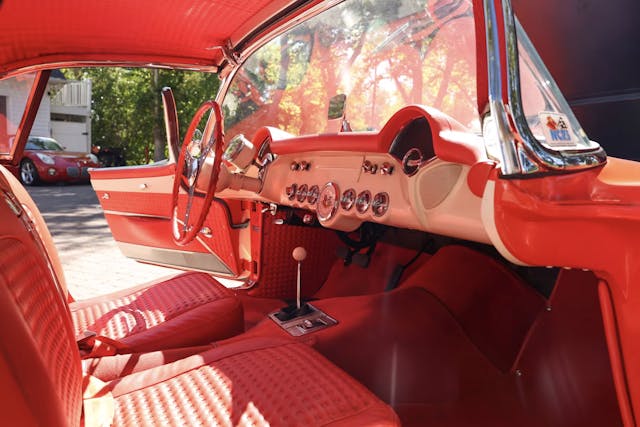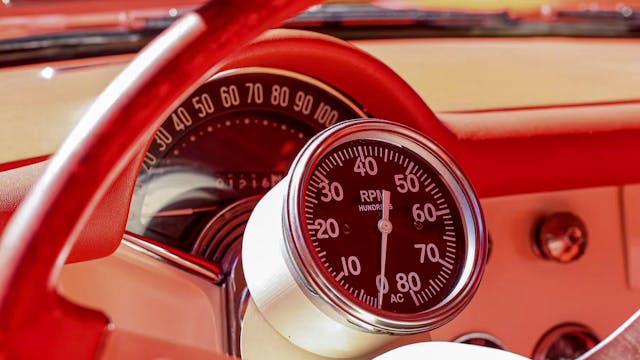Rare Corvette Test Mules Paved the Way for Sebring Victory
Auto manufacturers are a careful, sneaky bunch these days. They’ll keep development cars tucked away inside proving grounds, camouflage them when they can’t, or even put fake emblems on them. Then, once the pre-production parts have been certified, the poor test mules get crushed. Things weren’t like that in the 1950s. When Chevrolet had to put some soon-to-be-production parts through vigorous race testing, they pulled some cars out of production, bolted the high-performance parts on, and sent them out into the world to shake things out. Then they forgot about them. Thankfully one of those interesting Corvettes has turned back up on the scene.

After an inauspicious six-cylinder-powered launch, the Corvette finally got small-block V-8 power in 1955. Not long after, Chevrolet (and specifically Zora Arkus-Duntov) wanted to race Corvettes on the world stage to prove their mettle. Setting its sights on the grueling 12 Hours of Sebring, Chevrolet needed to homologate the performance parts its GT class cars would use. Before those parts were available on regular production cars, five early 1957 Corvettes were selected to shake down the new parts that Corvette racers would use to compete and win. These Field Test Fleet Corvettes, as they were called, were all equipped with a Positraction rear axle and RPO 684, a heavy-duty suspension and brake package with not-yet-available leaf springs. Like the regular production models, these Field Test Fleet Corvettes were powered by a 270-hp 283-cubic inch V-8 topped with Rochester mechanical fuel injection. However, they didn’t have the fabled “airbox” that would later go into production.
This car, VIN E57S102276, is currently up for sale on Hagerty Marketplace and was the first of the 1957 Field Test Fleet to get built. It is thought to have been originally sold in Southern California, and was discovered as a rolling shell in the 1970s, showing its racing heritage through lingering scars from a welded-in roll cage. In 1990, it was restored to its current condition and still looks fresh—it took the Top Flight award from the National Corvette Restorers Society in 2019.


Finished in Venetian Red with Polo White coves and red interior, 2276 is equipped with all of the desirable and hard-to-find parts you’d hope to find on a ’57 Fuelie, including an 8,000-rpm AC tach and Kelsey-Hayes wheels. Included in the sale is documentation of much of the car’s history, including several of its previous owners. What isn’t known is how the car fared in its earliest days when it appears to have been road-raced to take advantage of its rare factory parts. The work these cars did was put to good use, as the parts that were track tested by the Field Test Fleet cars went into Corvettes that took first and second in the GT class in Sebring in 1957.
The Field Test Fleet cars are an important piece in Corvette’s impressive racing pedigree and this one would be an impressive piece to add to a collection. It would look great displayed next to a battle-scarred C6.R or other modern endurance racer, so we hope it finds a home where its racing legacy is remembered and honored.



It’s a very cool car. Nice to see something like this test car is still around.
You can’t go wrong with an orange ‘57 Corvette! Absolute work of art.
Question, do you know if any of the early 58 big brake cars were used as factory mules? I have an unusual 58 big brake fuel injected car that was purchased by the earliest owner in 1959 and was clearly purpose built. It has a 58 date stamped over a late 57 fuel unit stamp, it was set up as the 57 airbox units. No radio, no heater, no washers, no courtesy light, hardtop only. And on the underside of the drivers floor pan factory applied grease pencil “RACER” and under that “489”. In discussions with Jim Gessner, Ken Kaiser, Tim Mickey, Chuck Berge and others they had never seen this type of marking on these cars, including “489” on this location and was probably the build sequence on the car. As I noted we have the history from 1959 on with a gap from the late 60’s to 1974 and then history to date. The car definitely was in the area of Whittier and Cerritos, California from 1959 to my purchase in 2017 and the owner of 1959 – 1962 raced it in the S.C.T.A. where it set a number of records in various distance races.